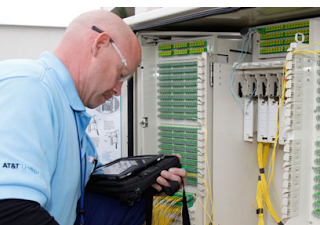At the company's Capital Markets Day event in Barcelona, Nokia outlined its vision and strategic priorities for ensuring sustainable growth.
The company cited four key priority areas:
"Nokia is extremely well-positioned to win in its primary market with communication service providers, and we aim to target superior returns through focused growth into more attractive adjacent markets where high-performance, end-to-end networks are increasingly in demand," stated President and CEO Rajeev Suri. "We also see opportunities to renew current patent licensing agreements at favorable terms, add new licensees in the mobile phone area and expand licensing further into new areas such as consumer electronics and the automotive sector. Given the appeal to others of our innovations in Networks, virtual reality and digital health, we are confident that we can continue to build our patent and technology licensing business further in the coming years," he continued.
Some highlights from the release:
See Rajeev Suri’s review at the Annual General Meeting in June 2016: https://youtu.be/YheSCoZMY6k
The company cited four key priority areas:
- Lead in high-performance, end-to-end networks with communication service providers: Use our unparalleled, end-to-end portfolio to sustain our market and profitability leadership.
- Expand network sales to select vertical markets needing high-performing, secure networks: Broaden our footprint in five select verticals: energy, transportation, public sector, technological extra-large enterprises and webscale.
- Build a strong, standalone software business: Move beyond our current product-attached software model and create a software business with the margin profile of large software companies, focused on areas including enterprise software and IoT platforms.
- Create new business and licensing opportunities in the consumer ecosystem: Expand successful patent licensing efforts into areas like automotive, consumer electronics and IoT. Create new revenue streams from technology and brand licensing, and establish new businesses in digital media and digital health.
"Nokia is extremely well-positioned to win in its primary market with communication service providers, and we aim to target superior returns through focused growth into more attractive adjacent markets where high-performance, end-to-end networks are increasingly in demand," stated President and CEO Rajeev Suri. "We also see opportunities to renew current patent licensing agreements at favorable terms, add new licensees in the mobile phone area and expand licensing further into new areas such as consumer electronics and the automotive sector. Given the appeal to others of our innovations in Networks, virtual reality and digital health, we are confident that we can continue to build our patent and technology licensing business further in the coming years," he continued.
Some highlights from the release:
- Nokia's Networks business aims to grow net sales faster over the long-term than its primary addressable market.
- Nokia's primary addressable market size is approximately EUR 113 billion in 2016, and is expected to have a 5-year compound annual growth rate of approximately 1%.
- Nokia's adjacent addressable market size is approximately EUR 18 billion in 2016, and is expected to have a 5-year compound annual growth rate of approximately 13%.
- Nokia targets the long-term operating margin range for Nokia's Networks business to be 10% to 15%, with all Networks business groups expected to contribute double-digit long-term operating margin. If the market environment and Nokia's execution are both in-line with Nokia's expectations, Nokia expects operating margin to be around the midpoint of this range.
- For 2017, net sales for Nokia's Networks business to decline in line with its primary addressable market in full year 2017.
- Nokia expects operating margin for Nokia's Networks business in full year 2017 to be in the range of 8% to 10%.
- Nokia targets approximately EUR 1.2 billion of total annual cost savings in full year 2018 compared to the combined non-IFRS operating costs of Nokia and Alcatel-Lucent for full year 2015, excluding Nokia Technologies.
See Rajeev Suri’s review at the Annual General Meeting in June 2016: https://youtu.be/YheSCoZMY6k






















